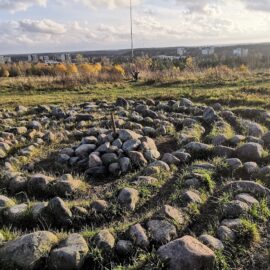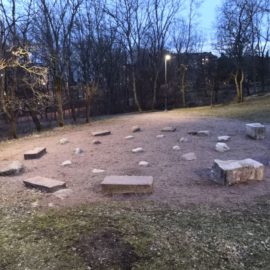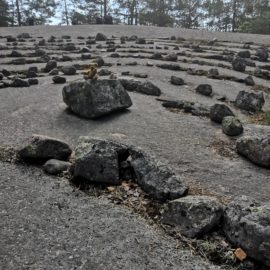Since we started our journey with umaze, we are in constant discovery of the immense and fascinating world of mazes. It is honestly captivating. As we advance in this discovery journey, I start to consciously realize the ubiquitous presence of mazes in our daily lives. At moments it appears we live in a maze’s world. This realization makes it evident how unaware we are about the mazes surrounding us.
If you search about mazes today, you will notice their world is fragmented. One can find different “categories” of mazes to be explored. In this post, we will briefly describe 11 categories we have encountered ourselves so far.
As a reminder, this blog aims to bring together the grandeur of mazes with a holistic perspective. Umaze’s blog sees mazes as a whole phenomena. We hope to collaborate with different communities who have their passion in a particular maze’s category or theme. Our vision is that umaze bridges the different maze categories allowing any individual on this planet to enjoy the amazing world of mazes while walking mazes anywhere in this planet.
11 Maze Categories
Until now we have discovered 11 categories of mazes: labyrinths, literature, mathematics, gardens (hedge mazes), corn fields, psychology, architecture, video games, art, toys, umaze.
In this post we will describe them briefly. In future publications we will talk in more detail of each category and even themes with categories. Also we are open to discover more categories. We hope you enjoy this journey with us.
1. Labyrinths
In English language we have the word maze and the word labyrinth. In the book Mazes and Labyrinths, the author W.H. Matthews mentions:
“What is the difference, it may be asked, between a maze and a labyrinth? The answer is, little or non. Some writers seem to prefer to apply the word “maze” to hedge-mazes only, using the word “labyrinth” to denote the structures described by the writers of antiquity, or as a general term for any confusing arrangement of paths. Others, again, show a tendency to restrict the application of the term “maze” to cases in which the idea of a puzzle is involved. “
However, while searching more into the world of labyrinths one can find a well defined and established community: the labyrinth society. If you are interested to walk labyrinths, this organization has created a labyrinth locator https://labyrinthlocator.com/
Nowadays, one can find a clear distinction between the words labyrinth and maze. Alex Pattakos writes in this article Life and the Labyrinth of Meaning:
“A labyrinth is not a maze or a puzzle to be solved but a path of meaning to be experienced. Its path is circular and convoluted, but it has no dead ends. A labyrinth has one entrance — one way in and one way out. When we walk the path, we go around short curves and long curves; sometimes we are out on the edge, sometimes we circle around the center. We are never really lost, but we can never quite see where we are going.”
Hence expect more articles to come related to labyrinths.
2. Literature
We started to read books where mazes are directly or indirectly in the heart of the novel. We found the website of Professor Thomas F. Banchoff, and he describes perfectly and briefly, the role of mazes in literature in his website:
“Mazes” and “labyrinths” appear in literary works of every kind–authors attempt to represent labyrinthine structures or themes in their writing, or set their characters, stories, and objects in the context of a maze, or reveal symbolic values from the features and thoughts surrounding the maze form.
3. Mathematics
A maze is great fun and it also is a math learning experience. Currently I am reading the book “The magical Maze” from Ian Stewart, and unquestionably mazes are an open-ended problem solving activity. It is up to us if we want to approach them with a “mathematical eye”. In any case, by its nature, mazes can help individuals to develop logic skills, understand patterns and sequences to mention just three intrinsic mathematical aspects mazes have. We can be bewildered with simple as well as complex aspects of mathematics in mazes. Some of these concepts are also useful in programming. We will be exploring these aspects as well.
4. Gardens (Hedge mazes)
During the Renaissance in Europe, hedge mazes evolved. Firstly they started with evergreen herbs. According to wikipedia, Italian architects had been sketching conceptual garden labyrinths as early as 1460, and hundreds of mazes were constructed in Europe between the 16th and 18th centuries.
Hence we have hundreds of mazes to discover across Europe, and who knows in other continents as well.
5. Corn field mazes
Some people might ponder why this is a category on its own and it is not a subset of gardens. The reason to keep corn fields as a separate category is because these mazes evolved later in time (in the XX century) and, without much reflection, their purpose is different. In the case of hedge mazes, mainly wealthy people were the promoters of them. The mazes were available all year round, and to maintain them was expensive. In many cases one of the purposes of the maze was to show off how wealthy the owner was. In contrast corn fields are driven by farmers. These mazes are “seasonal” and ideally they help with some income to the farm.
The corn field mazes, according to wikipedia, were first created in Pennsylvania, USA in 1993. These mazes have become a popular tourist attraction, offering to farms a tourist income. Nowadays there are landscape artists who work for farmers to design their mazes utilizing sophisticated technologies such as GPS.
6. Psychology
Somewhere we read that mazes have a human side as well, and psychology is a door to this aspect. So far we are aware that mazes are mainly used in psychology experiments to study spatial navigation and learning. Typically, these experiments involve rats or mice navigating in mazes.
According to James Goodwin, the neobehaviorist Edward Chace Tolman, PhD, in 1937 the APA president, made the following claim: “Everything important in psychology … can be investigated in essence through the continued experimental and theoretical analysis of the determinants of rat behavior at a choice-point in a maze.”
Wondering what can we discover about the research done in this category?
7. Architecture
Another fascinating category of mazes which offers interesting information and knowledge. According to the encyclopedia Británica
“Labyrinth” was the name given by the ancient Greeks and Romans to buildings, entirely or partly subterranean, containing a number of chambers and passages that rendered egress difficult.
The exploration from architecture perspective is fascinating. Mazes can be found explicitly in different constructions, for example in their floors or decoration in the walls. Also, we can find the concept of mazes more implicitly, as in the structural construction per se.
8. Video games
Video games utilize mazes often. Another book we are currently reading is: “Mazes in video games: Exploring Paths and Spaces”. Before offering a review of this book, we can mention that there are different themes we can discuss in this category. For example the game of Pac-Man or the game of mazes produced by Atari. This category might have reviewed some of these games as some analysis, perhaps more objectively of them. Pondering how to present this category.
9. Art
There are individuals who mainly love to draw mazes or produce movies about them. In this category we plan to interview some artists and share some of their art.

10. Toys
Mazes in the form of toys and board games are easily available. Within this category we share the games we find and ideally we have the opportunity to play with. For example in a follow up post, we talk of the game which we were just playing last Christmas: Monster Trap
11. umaze
Umaze is our driver. It is the next level of mazes and therefore it deserves a unique category. Umaze is an application that utilizes digital technology in combination with the satellite accuracy of Galileo to deploy and walk digital mazes outdoors. Umaze allows people to deploy mazes in open spaces and let them share and enjoy the mazes with others. We want to allow anyone on this planet to experience a maze.
In this category we will be sharing advances and mazes of umaze.



